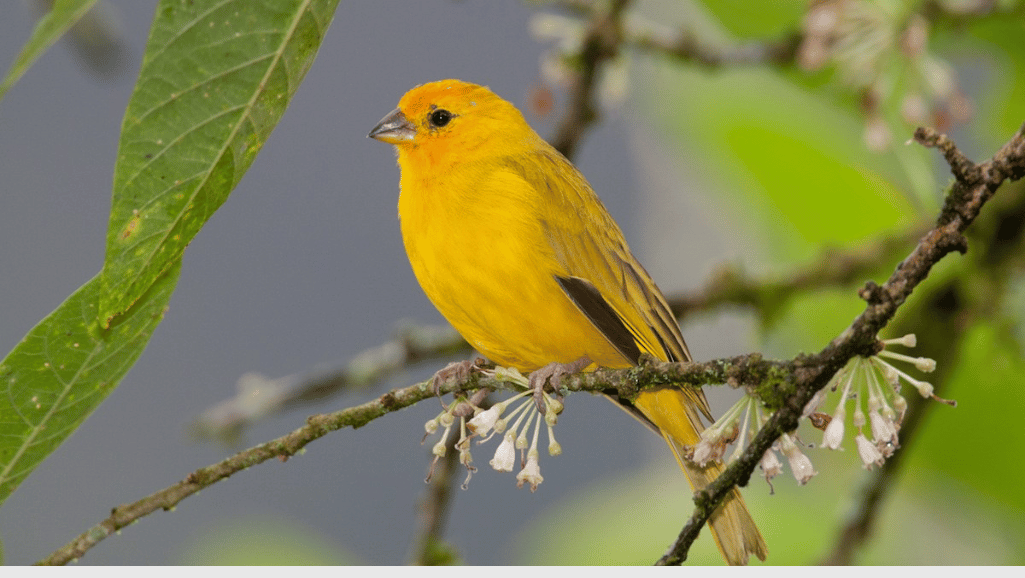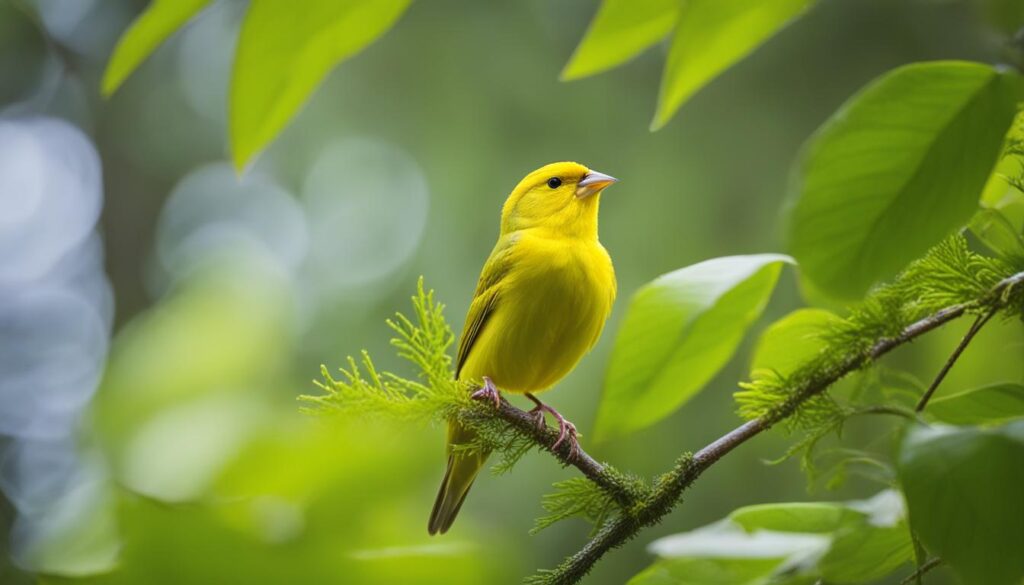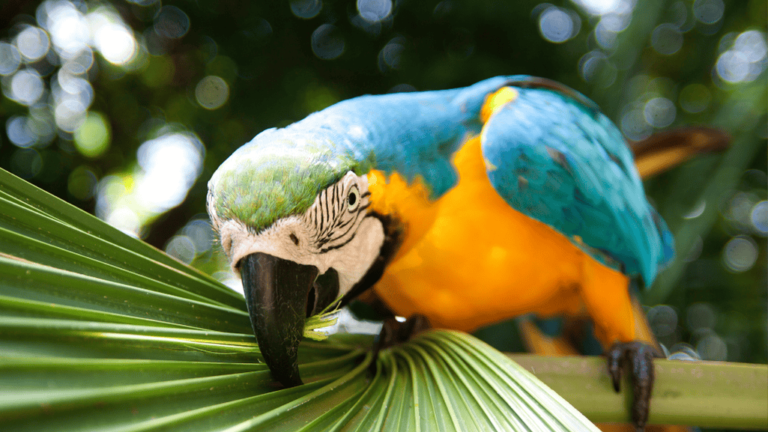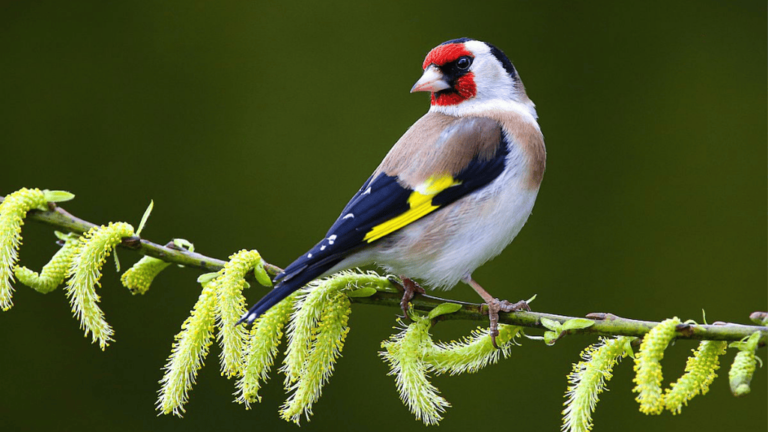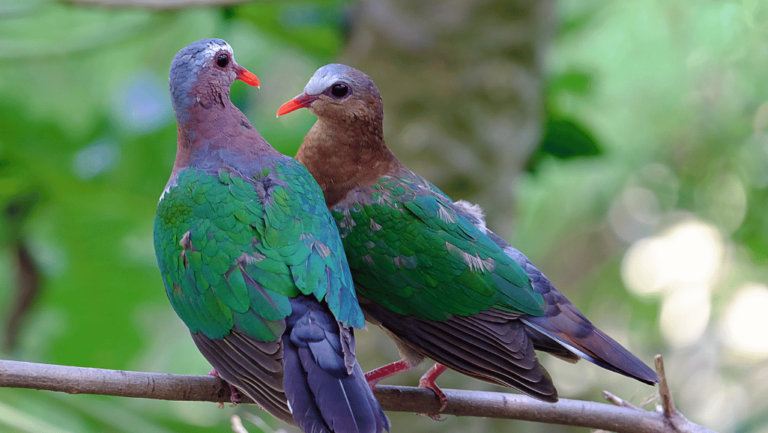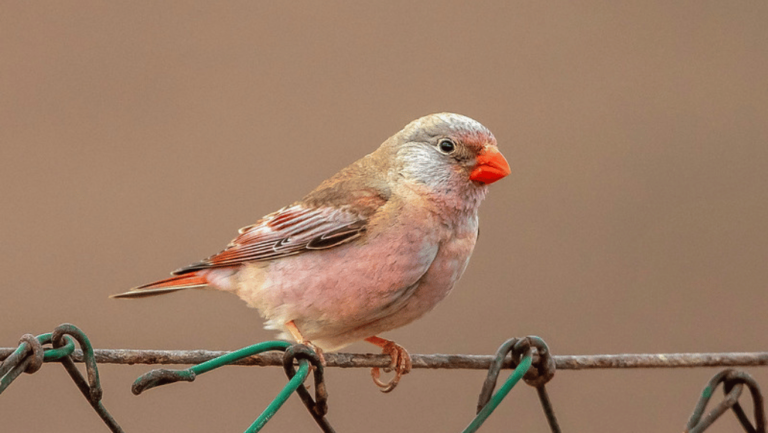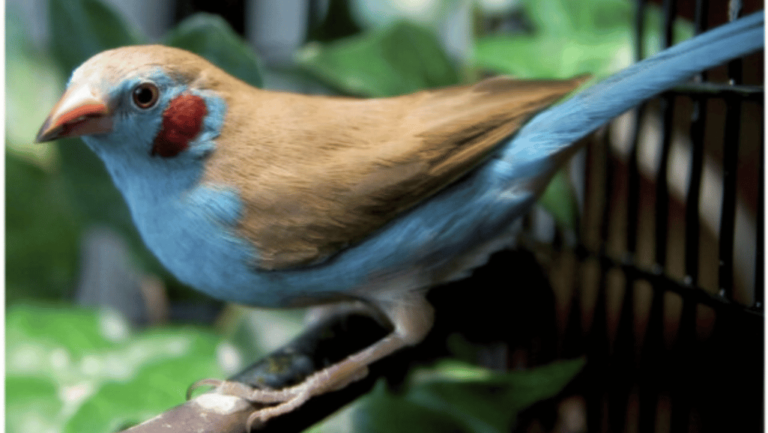Welcome to our article on the saffron finch, a vibrant and colorful bird species that brightens up the bird world with its stunning plumage and melodic songs. Also known as Sicalis flaveola, this passerine bird is native to South America but has made its way to various regions around the world, including Hawaii.
The saffron finch is a common sight in open and semi-open areas, where it thrives on a diet of seeds, insects, and other small creatures. Its habitat stretches from Colombia and Brazil to the Caribbean islands, making this charming finch a delightful sight for birdwatchers and nature enthusiasts.
Key Takeaways:
- The saffron finch is a colorful bird species native to South America.
- It is known for its bright plumage and melodic songs.
- Saffron finches are commonly found in open and semi-open areas.
- They have a varied diet, including seeds, insects, and small creatures.
- The saffron finch’s habitat ranges from Colombia and Brazil to the Caribbean islands.
Finch Ornithology: Breeding Habits and Migration Patterns
Saffron Finches are fascinating birds known for their intriguing breeding habits and migration patterns.
Breeding Habits:
Saffron Finches are monogamous birds that mate for life. At around two years of age, they start breeding and remain faithful to their mates throughout their lives. During the breeding season, male saffron finches display territorial behavior and engage in fierce disputes with other males for nesting areas. Despite their small size, they fearlessly fight birds twice their size to protect their territories and secure a safe breeding space.
In South America, the breeding season for saffron finches generally occurs from September to March. However, the exact timing may vary depending on the specific location. These vibrant birds demonstrate devoted parental care and actively participate in nest building, incubation, and feeding their young in order to ensure the survival and reproductive success of their offspring.
Migration Patterns:
While saffron finches are not known for long-distance migration, they do undertake short-distance movements within their range. These movements are mainly driven by the availability of food and suitable breeding grounds. Saffron finches may occasionally migrate to different areas in search of resources, such as seeds and insects, which are essential for their survival and successful breeding.
| Finch Breeding Habits and Migration Patterns | |
|---|---|
| Breeding Habits | Monogamous and mate for life |
| Males engage in territorial disputes | |
| Breeding season varies from September to March | |
| Actively involved in nest building and parental care | |
| Migration Patterns | Short-distance movements within their range |
| Motivated by food availability and breeding grounds | |
Understanding the intricate breeding habits and migration patterns of saffron finches provides valuable insights into their lifecycle and behavior. These remarkable birds exemplify dedication to their partners and display remarkable adaptability in their search for resources to support their reproduction and survival.
Avian Biodiversity: Saffron Finch in the Ecosystem
The saffron finch, as a member of the passerine family, plays a vital role in avian biodiversity in the regions where it is found. Its presence contributes to the overall beauty and diversity of the avian community.
One of the key contributions of saffron finches to the ecosystem is their role as seed-eating songbirds. As they consume seeds from various plants, they aid in seed dispersal and contribute to the regeneration of plant species. This process is critical for maintaining a healthy and balanced ecosystem.
Furthermore, saffron finches are known for their colorful plumage and melodic songs. Their vibrant appearance adds to the visual diversity of the avian community, while their melodious tunes bring joy and enchantment to their surroundings.
To emphasize the significance of saffron finches and their contribution to avian biodiversity, here is a table showcasing the diverse passerine bird species and their respective habitats:
| Passerine Birds | Habitat |
|---|---|
| Saffron Finch | Open and semi-open areas in South America |
| House Sparrow | Urban and rural areas worldwide |
| American Robin | Woodlands, parks, and gardens across North America |
| Golden-crowned Kinglet | Coniferous forests in North America and Eurasia |
| Sydney Blue Wren | Southeastern coast of Australia |
This table demonstrates the diverse range of passerine birds and their habitats, highlighting the importance of saffron finches as a unique contributor to avian biodiversity.
To better understand the avian biodiversity and the crucial role saffron finches play in the ecosystem, here is a list of other bird species found in the same regions:
- Scarlet Macaw
- Blue Jay
- Green-winged Teal
- Red-crested Cardinal
- Yellow Warbler
These diverse bird species, including saffron finches, create a rich tapestry of avian life, demonstrating the intricate interconnectedness of the natural world.
As we appreciate and protect the saffron finch and its fellow avian species, we ensure the preservation of avian biodiversity and the delicate balance of the saffron finch ecosystem.
Finch Conservation Status: Protecting the Saffron Finch
The saffron finch, also known as Sicalis flaveola, is currently not listed as an endangered species. However, like many bird species, it faces various threats that require conservation efforts to protect its population and preserve its natural habitat.
One of the primary threats to saffron finches is habitat loss caused by human activities. As urbanization and agricultural expansion continue to encroach upon natural areas, the finches’ suitable habitats are increasingly being destroyed or fragmented. This loss of habitat limits their ability to find sufficient food, shelter, and nesting sites, ultimately impacting their survival.
Predation by invasive species is another significant threat to the saffron finch population. Invasive predators, such as rats and snakes, feed on the eggs and young of saffron finches, reducing their reproductive success. These invasive species often outcompete native predators, further exacerbating the threat they pose to the vulnerable finch population.
The illegal trapping of saffron finches for the pet trade is also a concern for their conservation. Due to their vibrant colors and melodic songs, saffron finches are highly sought after as caged pets. The demand for these birds fuels illegal trapping and trade, which not only disrupts their wild populations but also contributes to the decline of the species.
To protect the saffron finch, conservation efforts must focus on several key strategies. Preserving suitable habitats through the establishment of protected areas and the implementation of sustainable land-use practices is crucial. This ensures that the finches have access to the resources they need for survival and reproduction.
Additionally, preventing and controlling invasive species is vital for maintaining a healthy saffron finch population. This can be achieved through the implementation of invasive species management programs, including the removal and eradication of invasive predators and the monitoring of their populations.
To curb the illegal trapping of saffron finches, enforcement agencies should prioritize efforts to combat wildlife trafficking. This involves stricter regulations, increased penalties, and public awareness campaigns to discourage the demand for illegally traded birds.
Monitoring and research play a crucial role in understanding the population dynamics of saffron finches and developing effective conservation strategies. By continuously monitoring their population size, distribution, and trends, researchers can identify potential threats and implement targeted conservation actions.
Conservation Strategies for Saffron Finches:
- Preservation of suitable habitats
- Prevention and control of invasive species
- Combating illegal trapping and trade
- Monitoring and research
| Threats to Saffron Finches | Conservation Measures |
|---|---|
| Habitat loss due to human activities | Preserving suitable habitats through protected areas and sustainable land-use practices |
| Predation by invasive species | Implementing invasive species management programs and controlling invasive predators |
| Illegal trapping for the pet trade | Enforcement of regulations, increased penalties, and public awareness campaigns against wildlife trafficking |
| Need for population monitoring and research | Continuous monitoring of saffron finch populations and research to inform conservation strategies |
Protecting the saffron finch is not only essential for the long-term survival of this vibrant bird species but also for maintaining the biodiversity and functioning of the ecosystems they inhabit.
Saffron Finch: A Delightful Birdwatching Experience
Observing saffron finches in their natural habitat can be a delightful experience for birdwatchers. These small, colorful birds can be found in open and semi-open areas, often in small flocks with their fellow saffron finches. They are known for their pleasant songs, although they can be high-pitched. Their behavior includes basking in the sun, foraging for seeds and insects, and engaging in courtship displays during the breeding season. With their distinctive coloration and behavior, saffron finches are relatively easy to identify, making them a popular target for birdwatchers.
To fully appreciate the beauty of saffron finches, let’s take a closer look at their behavior:
- Basking in the Sun: Saffron finches often perch in sunny spots, spreading their wings and soaking up the warmth of the sun. This behavior is not only adorable to witness but also serves the purpose of thermoregulation.
- Foraging for Seeds and Insects: Saffron finches have a diverse diet, consisting of seeds, insects, and other small invertebrates. They use their sharp beaks and agile movements to extract seeds from grasses and forage for insects in shrubs and trees.
- Courtship Displays: During the breeding season, male saffron finches perform elaborate courtship displays to attract females. These displays may include singing, wing-fluttering, and offering food items as gifts.
When it comes to identifying saffron finches, their distinct characteristics make them stand out:
- Coloration: Male saffron finches display a vibrant yellow-orange coloration with an orange crown, while females have a more greenish appearance. Their striking colors make them easy to spot in their natural habitat.
- Size and Shape: Saffron finches are small birds, measuring over 5 inches in length and weighing less than an ounce. They have round wings and a rapid flight pattern characterized by quick wing beats.
- Songs: Saffron finches are known for their melodic songs, though they can be high-pitched. Their tunes add a charming ambiance to any birdwatching experience.
When capturing the essence of saffron finches in birdwatching, one can’t help but be captivated by their beauty, behavior, and distinctive features.
Saffron Finch Diet: Seeds, Bugs, and More
The saffron finch has a diverse diet that includes various food sources. While primarily seed-eating birds, these finches also consume insects and their larvae to supplement their nutrition, especially during the breeding season when they require additional protein for their young.
The saffron finch’s diet consists of a mixture of grass seeds, wild seeds, plants, ant eggs, mealworms, waxworms, and fruit fly larvae. Grass seeds, in particular, are a preferred choice for these birds. However, they are adaptable and capable of adjusting their diet based on the availability of food sources in different environments.
This flexibility in their diet contributes to the saffron finch’s resilience and survival in various habitats. Their ability to consume a wide range of food allows them to thrive even in regions with limited seed resources. By including insects in their diet, saffron finches also exhibit some insectivorous behaviors, further diversifying their feeding habits.
Recommended Diet for Saffron Finches
For those who keep saffron finches as caged pets, it is essential to replicate their natural diet as closely as possible to ensure their well-being. A balanced diet for saffron finches in captivity should consist of:
- A variety of grass seeds
- Commercially available finch seed mixes
- Fresh fruits and vegetables (such as apples, bananas, spinach, and broccoli)
- High-quality bird pellets
- Occasional treats like mealworms and waxworms
Providing a diverse and nutritious diet is crucial for the overall health and longevity of saffron finches.
Nutritional Requirements of Saffron Finches
Saffron finches require a well-balanced diet to obtain the necessary nutrients for optimal health. Here are some key nutritional requirements:
| Nutrient | Importance | Food Sources |
|---|---|---|
| Protein | Essential for growth, maintenance, and reproduction | Insects, ant eggs, mealworms |
| Carbohydrates | Primary energy source | Grass seeds, wild seeds, fruits, vegetables |
| Fats | Provide energy and essential fatty acids | Commercially available bird pellets, seeds with higher fat content |
| Vitamins and Minerals | Essential for overall nutrition and health | Fruits, vegetables, and high-quality bird pellets |
By ensuring a well-rounded diet that meets these nutritional requirements, saffron finches can lead healthy and fulfilling lives as both wild birds and caged pets.
Saffron Finch as a Caged Pet: Care and Considerations
Saffron finches make wonderful caged pets and are highly sought after by bird enthusiasts. Their hardiness and adaptability to captivity make them a popular choice for those looking to keep a pet bird. However, it’s important to provide proper care and attention to ensure their well-being and happiness.
Here are some key considerations for caring for a saffron finch as a caged pet:
1. Spacious Cage:
Provide a spacious cage that allows for ample flight and exercise. The cage should be large enough to accommodate their natural behavior of flying and hopping between perches.
2. Balanced Diet:
Offer a balanced diet that mimics their natural food sources. Saffron finches are primarily seed-eating birds, so provide a variety of high-quality seeds. Supplement their diet with fresh fruits and vegetables, as well as a source of protein such as insects or commercially available small bird food pellets.
3. Mental Stimulation:
Ensure your saffron finch has plenty of mental stimulation to prevent boredom and encourage natural behavior. Provide them with a variety of toys, such as swings, bells, and puzzle toys, to keep them entertained. Social interaction with their human caregiver is also important for their well-being.
4. Safe Environment:
Create a safe and comfortable environment for your saffron finch. Ensure that the cage is made of bird-safe materials and regularly inspect it for any hazards or potential escape routes. Place the cage in a quiet area away from drafts, direct sunlight, and other pets that may cause stress or harm.
5. Routine Veterinary Care:
Establish a relationship with an avian veterinarian who can provide routine check-ups and address any health concerns. Regular veterinary care is crucial for maintaining the overall health and well-being of your saffron finch.
6. Behavioral Considerations:
Understand and respect the natural behaviors of saffron finches. They are social birds that thrive with companionship, so consider providing them with a same-species companion if possible. Additionally, be mindful of their territorial nature during the breeding season and provide adequate space and privacy.
Taking proper care of your saffron finch as a caged pet will ensure that they live a happy and healthy life in captivity. By meeting their physical, nutritional, and psychological needs, you can create a fulfilling and enriching environment for your feathered friend.
Saffron Finch and Other Bird Species in Hawaii
The saffron finch is a beautiful bird species that has been introduced to Hawaii from various parts of the world. Along with the saffron finch, several other bird species have established populations in the islands, contributing to the diversity of Hawaii’s avian population.
These introduced species include:
- Mynah bird
- Zebra dove
- Yellow-billed cardinal
The introduction of these bird species has enriched Hawaii’s avian population, creating a vibrant and varied ecosystem.
However, it is essential to carefully manage and monitor these introduced species to prevent any negative impacts on native bird species and the overall balance of the ecosystem. This involves implementing conservation measures, conducting research, and raising awareness about the importance of preserving Hawaii’s unique avian biodiversity.
By safeguarding the diverse bird species in Hawaii, we can not only maintain the natural beauty of the islands but also ensure the long-term survival of these precious avian populations.
Saffron Finch: A Symbol of God’s Creation
In various religious and cultural beliefs, birds hold symbolic significance. They are often associated with freedom, grace, and spirituality. The saffron finch, with its vibrant plumage and melodic songs, is no exception. In the biblical context, birds are mentioned numerous times, symbolizing God’s creation and care for these creatures.
The saffron finch, with its striking yellow-orange coloration, is a testament to the beauty and intricacy of God’s creation. Its brilliant plumage serves as a reminder of the vibrant and diverse natural world that surrounds us.
Furthermore, the melodic songs of the saffron finch echo the harmonious sounds of nature, evoking a sense of awe and wonder. The bird’s musical abilities have been celebrated in various cultural traditions, highlighting its role as a symbol of joy and spirituality.
Whether observed in the wild or kept as caged pets, saffron finches can inspire a deeper connection with the natural world and a greater appreciation for the wonders of God’s creation.
As we marvel at the saffron finch’s beauty and listen to its enchanting melodies, we are reminded of the intricate balance and diversity of life that exists around us, a testament to the power and artistry of the creator.
Biblical References to Birds and God’s Creation
- Genesis 1:20-21 – “And God said, Let the waters bring forth abundantly the moving creature that hath life, and fowl that may fly above the earth in the open firmament of heaven.”
- Matthew 6:26 – “Behold the fowls of the air: for they sow not, neither do they reap, nor gather into barns; yet your heavenly Father feedeth them. Are ye not much better than they?”
- Psalms 50:11 – “I know all the fowls of the mountains: and the wild beasts of the field are mine.”
- Matthew 10:29 – “Are not two sparrows sold for a farthing? and one of them shall not fall on the ground without your Father.”
Saffron Finch and its Unique Characteristics
The saffron finch possesses a range of distinctive physical characteristics, behaviors, and lifespan that make it a fascinating species.
Physical Characteristics
The saffron finch is a small bird, measuring over 5 inches in length and weighing less than an ounce. The males exhibit a striking yellow-orange coloration with an orange crown, while the females display a more subtle greenish hue.
Behavior
Saffron finches are known for their rapid flight pattern characterized by quick wing beats and rounded wings. They can also be quite territorial during the breeding season, exhibiting aggression towards other birds as they establish and defend their nesting areas.
Lifespan
The average lifespan of saffron finches is around 10 years, although individuals in captivity have been known to live longer with proper care and nutrition.
| Physical Characteristics | Behavior | Lifespan |
|---|---|---|
| Small size: over 5 inches in length and weighs less than an ounce | Rapid flight pattern with quick wing beats and rounded wings | Average lifespan of around 10 years |
| Bright yellow-orange coloration with orange crown in males; greenish hue in females | Territorial during breeding season, exhibiting aggression towards other birds |
Conclusion
The saffron finch is a remarkable bird species that captivates with its vibrant plumage, melodic songs, and unique behaviors. This passerine bird is found in various regions around the world, contributing to avian biodiversity and enhancing the beauty of natural environments. However, the saffron finch faces challenges, including habitat loss and illegal trade, which threaten its long-term survival.
Conservation efforts are crucial to safeguarding the saffron finch and ensuring its place in the natural world. Protecting its habitat, preventing illegal trade, and controlling invasive species are vital components of these efforts. By monitoring saffron finch populations and implementing effective conservation strategies, we can preserve this species for future generations.
The saffron finch serves as a symbol of the diverse and wondrous natural world. Its presence reminds us of the intricate connections between species and the importance of protecting and appreciating biodiversity. By understanding and valuing the saffron finch, we gain a deeper understanding of the complexity and beauty of the ecosystems we share.
FAQ
What is the scientific name of the Saffron Finch?
The scientific name of the Saffron Finch is Sicalis flaveola.
Where is the Saffron Finch native to?
The Saffron Finch is native to South America.
What is the habitat of the Saffron Finch?
The Saffron Finch is found in open and semi-open areas, ranging from Colombia and Brazil to the Caribbean islands.
What do Saffron Finches eat?
Saffron Finches primarily feed on seeds but also consume insects and other small creatures.
When do Saffron Finches start breeding?
Saffron Finches typically start breeding at around two years of age.
Are Saffron Finches monogamous?
Yes, Saffron Finches are monogamous birds that mate for life.
What is the breeding season of Saffron Finches?
The breeding season of Saffron Finches varies depending on the location but generally occurs from September to March in South America.
Do Saffron Finches migrate?
Saffron Finches do not undertake long-distance migration but may make short-distance movements within their range.
Are Saffron Finches an endangered species?
No, the Saffron Finch is not currently listed as an endangered species.
Can Saffron Finches be kept as pets?
Yes, Saffron Finches can be kept as caged pets and are popular among bird enthusiasts.
What is the lifespan of a Saffron Finch?
The average lifespan of a Saffron Finch is around 10 years.


